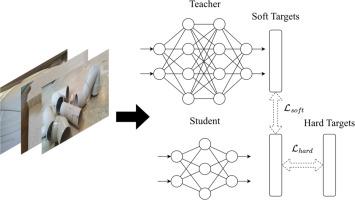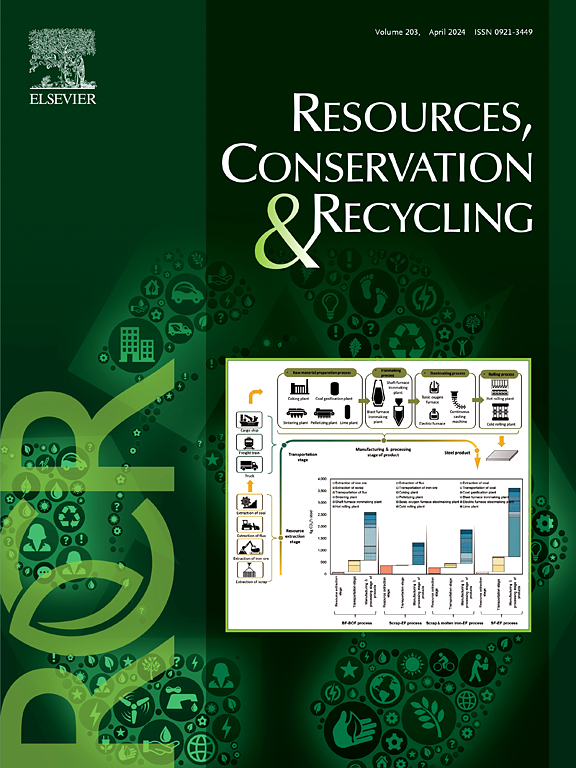使用 RGB 图像按树脂类型对基于深度学习的建筑和拆除塑料垃圾进行分类
IF 11.2
1区 环境科学与生态学
Q1 ENGINEERING, ENVIRONMENTAL
引用次数: 0
摘要
建筑与拆除行业产生的垃圾占澳大利亚垃圾总量的很大一部分,其中塑料是可回收利用的主要成分。人们认为对垃圾进行分类和分拣在经济上是不切实际的,再加上垃圾填埋工艺的简便性,往往导致混合材料被直接送往垃圾填埋场。因此,开发一套商业上可行的系统来准确分离所产生的垃圾势在必行。本文介绍了一项关于使用 RGB 图像按树脂类型对基于深度学习的建筑和拆除塑料垃圾进行分类的综合研究。本文收集了大量专业的报废塑料垃圾图像数据集。该数据集包括建筑项目中常用的四种塑料类型--ABS、HDPE、PS 和 PVC。利用在 ImageNet 上预先训练好的模型进行迁移学习,本文开发出了针对该分类任务的高精度模型。基于高级卷积神经网络和视觉转换器的模型,包括 ResNet、ResNeXt、RegNet 和 Swin Transformer,都在该数据集上进行了训练和评估。这项工作的另一个贡献是从计算密集型的大型精确模型中提炼知识,以提高专为在边缘设备上部署而设计的快速、紧凑模型的精确度。本研究通过使用大型、计算密集型 Swin Transformer 模型的输出类概率来应用知识蒸馏技术,以提高快速、轻量级 MobileNetV3 模型的准确性。研究结果表明,RGB 图像因其可用性、低成本、易用性、设置简单以及对操作条件变化的鲁棒性,为有效识别塑料提供了一种替代其他昂贵而复杂系统的实用方法。本文章由计算机程序翻译,如有差异,请以英文原文为准。

Deep learning-based construction and demolition plastic waste classification by resin type using RGB images
The construction and demolition sector generates a substantial portion of Australia's total waste, with plastics being a key recyclable component. The perceived financial impracticality of sorting and separating waste, coupled with the simplicity of landfilling processes often contribute to mixed material loads sent directly to landfills. Therefore, developing a commercially feasible system that can accurately separate the generated waste is imperative. This paper presents a comprehensive study on using RGB images for deep learning-based construction and demolition plastic waste classification by resin type. A large and specialised dataset of end-of-life plastic waste images is gathered. This dataset comprises four commonly used plastic types in construction projects—ABS, HDPE, PS, and PVC. Leveraging Transfer Learning with models pre-trained on ImageNet, highly accurate models tailored to this classification task are developed in this paper. Advanced Convolutional Neural Network and Vision Transformer-based models, including ResNet, ResNeXt, RegNet, and Swin Transformer, are trained and evaluated on this dataset. Another contribution of this work is Knowledge Distillation from a large, computationally intensive, and accurate model to enhance the accuracy of fast and compact models specifically designed for deployment on edge devices. This study applies Knowledge Distillation by using the output class probabilities of the large, computationally intensive Swin Transformer model to enhance the accuracy of the fast and lightweight MobileNetV3 models. The results demonstrate that RGB images offer a practical alternative to other costly and complex systems for effective plastic identification, due to their availability, low cost, ease of use, simple setups, and robustness to variations in operational conditions.
求助全文
通过发布文献求助,成功后即可免费获取论文全文。
去求助
来源期刊

Resources Conservation and Recycling
环境科学-工程:环境
CiteScore
22.90
自引率
6.10%
发文量
625
审稿时长
23 days
期刊介绍:
The journal Resources, Conservation & Recycling welcomes contributions from research, which consider sustainable management and conservation of resources. The journal prioritizes understanding the transformation processes crucial for transitioning toward more sustainable production and consumption systems. It highlights technological, economic, institutional, and policy aspects related to specific resource management practices such as conservation, recycling, and resource substitution, as well as broader strategies like improving resource productivity and restructuring production and consumption patterns.
Contributions may address regional, national, or international scales and can range from individual resources or technologies to entire sectors or systems. Authors are encouraged to explore scientific and methodological issues alongside practical, environmental, and economic implications. However, manuscripts focusing solely on laboratory experiments without discussing their broader implications will not be considered for publication in the journal.
 求助内容:
求助内容: 应助结果提醒方式:
应助结果提醒方式:


